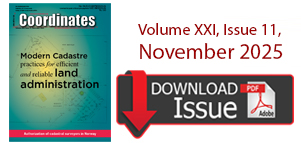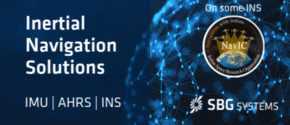Navigation in India: smooth sail or a bumpy ride
Amit Prasad, Shivalik Prasad, Ashutosh Pande, Raghvendra rishnamurthy Shashank N Dhaneshwar, Alok Shankar
|
Perspectives on key factors aiding and affecting in-car navigation in India.
|
|
|
|
 |
Shashank N Dhaneshwar
|
D.G.M.(Electronics) Electronics, E & E, ERC,
|
Tata Motors, Pune, India
|
shashank.dhaneshwar@ tatamotors.com
|
|
|
|
|
|
|
Providing accurate and useful maps for Indian roads and cities is a formidable challenge
With unveiling of the revolutionary Tata “Nano” small car having a huge market potential, India has captured attention of all major automotive technology vendors. The satellite based land-vehicle navigation is one such technology. The improving roadways infrastructure, rapidly increasing number of mobile phone users and review of regulatory policies on use of Digital Maps are some of the factors which have resulted into introduction of several “Navigation and Route Guidance” solutions for passenger cars in the Indian market. Major players have entered in the Indian market with products based on both dedicated Personal Navigation Devices and mobile handsets with built-in GPS.
In order to enable a smooth ride for the customer when using the navigation technology, various stakeholders like navigation device vendors, vehicle manufacturers, service providers and government regulatory agencies will have to work together for the common goal of satisfaction and safety of the customer From customer’s perspective, although availability of international grade systems is a desirable situation, it is necessary to scrutinize the utility of various features provided and the cost of ownership of a car navigation system. In addition to accurate and reliable route guidance system , the customer will expect features like traffic and weather information, voice based navigation in Indian languages, localized travel related information, hands-free voice communication, seamless integration with devices like i-pod and so on. The device vendors will have to meet these
expectations at an affordable cost and also maintain high quality performance required for automotive applications.
The vehicle manufacturers will have to design vehicle infotainment architectures which can host personal navigation devices, mobile phones or dedicated black boxes. The vehicle system will open a communication channel with the navigation device to share its information on vehicle parameters and its hardware like visual displays. The integration process should also cater to safety considerations like driver distraction and protection from injury in event of crash. The role of mobile telephone network providers and location based service providers will be important to offer value added services mentioned above. The government regulatory agencies can act as catalyst in standardizing and establishing Emergency Help system as a basic feature of any navigation system. Providing accurate and useful maps for Indian roads and cities is a formidable challenge due to different addressing systems followed and the on-going construction of new roads and buildings. The map provider can ensure the accuracy of maps by taking help from government agencies and meet requirements for reliable navigation.
|
|
|
«Previous 1 2 3 4 5 6View All| Next»
Pages: 1 2 3 4 5 6













 (No Ratings Yet)
(No Ratings Yet)





Leave your response!